What is the smell of gas called: what gives natural gas a characteristic smell + odorant hazard class
The sense of smell of a person is the most effective "device" for detecting gas leaks. And special additives with an unpleasant odor, which are mixed with “blue” fuel, are called upon to help him. Agree, they are rarely remembered and even less known. Are you interested in what is the smell for gas called and why should it be added to the gas?
We will help to understand these issues - the article discusses the reasons for adding aroma to the gas and the features of these smelling substances. The standards according to which the smell is added and safety measures when using odorants are given.
The content of the article:
Smelling gas additive requirements
The two most unpleasant characteristics of natural gas for consumers are the lack of color and odor. The reason is that its leak is a direct path to the explosion or fire. It is almost impossible to detect a leak of a colorless substance that does not have an odor.
Therefore, the only way out is to use odorants. The fact that these substances are represented is stated in TU 51-31323949-94-2002, developed by VNIIGAZ LLC, which is a division of Gazprom. Based on the provisions of these conditions, odorants are produced.
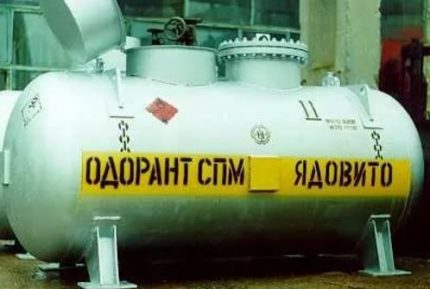
And the specified technical condition says that odorants are intensely smelling substances or their combinations, which are added to natural gas. Moreover, exclusively in low concentrations in order to give a specific (unpleasant) warning smell.
This is done to facilitate the detection of gas leakage when its concentration level does not reach the lower explosive limit. That makes it possible for any person to detect a fuel leak at a concentration of about 1% of the total volume of the room. This provides a margin of time in order to prevent negative consequences.Since an explosion can occur when the gas concentration reaches 5% of the total volume of the room.
We recommend you to get acquainted with the best gas leak test methods at home.
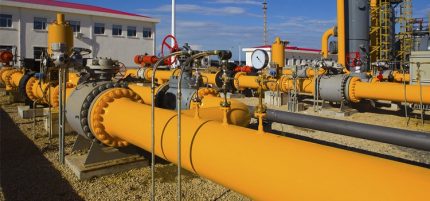
GOST 5542-2014 governs what should be household gaswhich is supplied to consumers. Actually, it can be considered the main profile document. Since the question of what needs to be added to natural gas to give it a specific unpleasant odor is not completely regulated in the Russian Federation.
Only a document can be considered an exception. WFD 39-1.10-069-2002. This is Gazprom’s internal document. It describes in detail the odorization procedure, which substances are used for this, as well as the safety requirements when working with odorants.
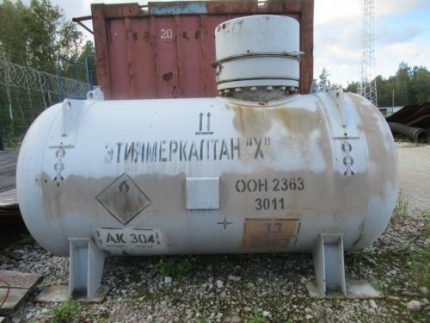
In addition to a specific smell, odorants should have a number of characteristics:
- exhibit chemical and physical stability in a vapor state when mixed with gas and during transportation through a pipeline;
- not adversely affect the materials of which the pipes are made and any other structural elements of gas pipelines - this is necessary in order to exclude a decrease in the operational characteristics and service life of pipelines in general and its individual structural elements;
- be concentrated - this will make it possible to reduce the amount of substance used;
- have little toxicity - This requirement applies exclusively to working concentrations of odorants.
It should be noted that today not a single mass-used chemical substance fully meets all of these requirements.
But the most suitable are the so-called natural mercaptans, and, to be precise, their mixtures. The smell of which consumers feel every time the gas equipment is turned on.
Features a mixture of natural mercaptans
A mixture of natural mercaptans is an organic compound. Mercaptans have pronounced aromatic properties, therefore they emit an unpleasant and pungent odor, even at low concentrations.
The odorant production method is based on alkaline extraction, that is, the separation of mercaptans from stable gas condensate, as well as its mixtures with oil. The result is a primary product called SMP - a mixture of natural mercaptans.

Secondary product is SMP-1which is drained by the NSR. Moreover, both types of odorant are suitable for mixing with gas. So it is said in the above TU.
Mixtures of mercaptans are supplied in liquid form. It is transparent and has an extremely unpleasant and pungent odor. In addition, SMP, as well as its derivative SMP-1, is hazardous substances hazard class 2. Relate to flammable products. Therefore, the premises for odorization and storage of the mixture should be equipped in accordance with the requirements for premises of category B-1a.
Mercaptans became the main odorant back in 1984. Currently, they are produced at the Orenburg Processing Plant (part of Gazprom’s structure).
Standards and restrictions for adding odorant
As indicated above, mixtures of natural mercaptans are introduced in small quantities.In practice, this is the case, since only 16 g of the indicated chemicals for every 1000 m³ of natural gas supplied to consumers can provide the desired level of smell.
Today, GOST 5542-2014 limits the density of mercaptan sulfur in the odorant to 0.0036 grams per cubic meter. Although the said document says that in individual gas pipelines the amount of the specified substance in the composition of odorants may be somewhat larger. In this case, the exact figure is not given.
The reason for the limitation is that sulfur reacts with iron oxide, which is formed as a result of corrosion of steel pipes of gas mains and a significant part of distribution pipelines. And this feature often leads to a significant reduction in the amount of odorant used, which makes their use almost useless.
In order not to be afraid of gas leaks and the deplorable consequences to which they can lead, experts recommend leak detector with shut-off valve - such a device not only detects a leak in a timely manner, but also immediately shuts off the gas supply to the apartment or house.
How is the process of adding smell?
The specified substance, which serves to give a specific smell to gas supplied to consumers, is mixed with it using special installations. They are equipped with gas distribution stations.
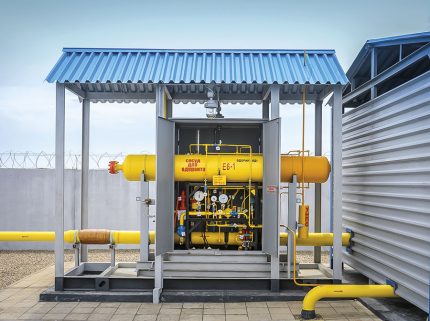
There are 2 ways to odorize:
- vapor saturation natural mercaptans;
- drip input the necessary amount of odorant to the gas stream.
At domestic gas distribution stations, both varieties of plants are successfully used. But the most popular is equipment, with the help of which the drip introduction of mercaptans is carried out. The reason is its simplicity and cheapness.
The procedure for applying an odorant is done using a dropper. And the method is based on the constant value of one drop of liquid. So, in the case of mercaptans, the indicated volume is always 0.002 g.
To prevent malfunctions in the work of odorizing plants, the flow rate of a substance that gives a specific smell to gas is constantly monitored.

The only automated way to mix mercaptans and energy is to use bubblers.
Despite the active use of odorants, methods for introducing them into the gas stream are considered obsolete. As a result, experts predict the emergence in the coming years of fundamentally new mixing methods based on methods of accurate express analysis of the situation.
Safety measures when working with mercaptans
All varieties of odorizing substances are Hazard class 2. The main component of an odorant is ethyl mercaptan - contains in its composition a large amount of sulfur. Usually it is not less than 37%, as indicated by TU 51-31323949-94-2002. And such a feature can lead to negative consequences for the human body, and even to death (if the substance enters the body).
Therefore, when interacting, storing, transporting this substance, safety measures must be observed, which is dedicated to paragraph 5.5 WFD 39-1.10-069-2002.
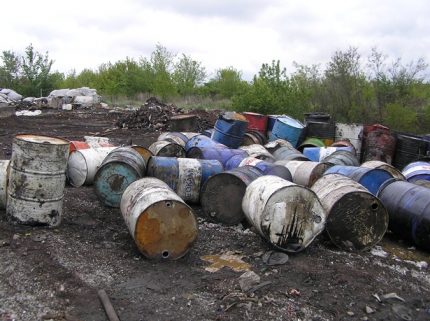
According to these requirements, in contact with concentrated odorant, special clothing should be used, personal protective equipment - gas mask, rubber boots and mittens, rubberized aprons.
In this case, in a room with an odorant, exhaust ventilation must be turned on. If toxic liquid or its vapor enters the skin, their residues must be washed off with a significant amount of warm water, if possible with soap.
If mercaptans caused irritation of the mucous membranes, then the affected areas should be rinsed:
- warm water;
- 2% soda, if it is nearby.
If respiratory organs are affected, then the victim should be evacuated from the premises. And his well-being will improve fresh air and peace. And with damage to the respiratory system, it is necessary to call a doctor without fail.
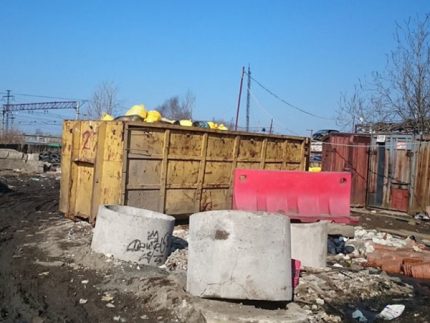
Although many experts criticize certain points and provisions contained in Gazprom’s departmental instructions on safety measures during storage, transportation, and use of odorants, consumers should be prepared for various situations.
The fact is that various incidents and incidents with odorants are common enough. For example, in 2012, their smell led to a great commotion in Penza. A few years ago there were incidents in the Leningrad Region, and just a couple of years ago, the Ministry of Emergency Situations had to urgently evacuate a tank with mercaptans from the Northern capital itself.
In 2017, a panic arose in the small Ukrainian city of Lysychansk, when gas workers somewhat exceeded the norm set for mixing odorant and gas. And at the end of 2018, Rospotrebnadzor revealed the presence of a mixture of mercaptans in the atmosphere of Nizhnevartovsk. Moreover, in the very center of the city. As it turned out later, someone buried a barrel of this substance, and during the excavation, it was damaged.
But the ordinary gas consumer should not be afraid - it is difficult to suffer from the effects of the odorant in practice, because its concentration in the fuel supply is negligible to cause a visible reaction in domestic use.
Nevertheless, it should be remembered that if the smell of SPM has become more acute, then you need to turn off all gas appliances, open the windows, leave the room and report the incident to the gas service on-duty.
If a pungent aroma penetrates from the outside, then you need to close the windows tightly and try not to go outside. In addition, you need to call the Ministry of Emergencies or gorgaz.
We recommend that you familiarize yourself with the algorithm for detecting leaks in apartment or porch.
Conclusions and useful video on the topic
The video attached below describes the mercaptans incident in Penza.
They give gas odor to gas odorants, which significantly reduce the likelihood of accidents. But organic substances used as hazard indicators are potentially hazardous to health and are used due to the fact that today there is no alternative.
As a result, consumers should be knowledgeable not only about whether the gas supplied has an odor, but also skills that can help mitigate the effects of poisoning with these substances.
Still have questions about the above material? Or do you want to supplement our article with useful information that will be of interest to our readers? Write your comments, leave recommendations, ask questions to our experts and other users - the feedback form is located below.

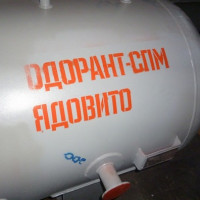 Natural gas odorant: features of odorants, norms and rules for their entry
Natural gas odorant: features of odorants, norms and rules for their entry 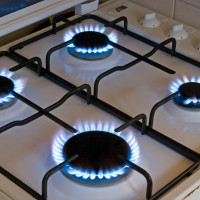 Is it possible to bask in a gas stove: norms and requirements + potential dangers when ignoring a ban
Is it possible to bask in a gas stove: norms and requirements + potential dangers when ignoring a ban  Where to call if there is no gas in the apartment: reasons for disconnection + procedure for the absence of gas
Where to call if there is no gas in the apartment: reasons for disconnection + procedure for the absence of gas 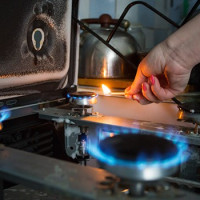 Types of domestic gas: what gas comes to our apartments + features of domestic gas
Types of domestic gas: what gas comes to our apartments + features of domestic gas  Actions for the smell of gas in the boiler room: what to do when a characteristic odor is detected
Actions for the smell of gas in the boiler room: what to do when a characteristic odor is detected 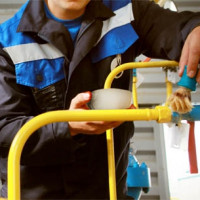 Gas leak: where to call, what can and cannot be done if the apartment smells of gas
Gas leak: where to call, what can and cannot be done if the apartment smells of gas  How much does it cost to connect gas to a private house: the price of organizing gas supply
How much does it cost to connect gas to a private house: the price of organizing gas supply  The best washing machines with dryer: model rating and customer tips
The best washing machines with dryer: model rating and customer tips  What is the color temperature of light and the nuances of choosing the temperature of the lamps to suit your needs
What is the color temperature of light and the nuances of choosing the temperature of the lamps to suit your needs  Replacement of a geyser in an apartment: replacement paperwork + basic norms and requirements
Replacement of a geyser in an apartment: replacement paperwork + basic norms and requirements
I live in a non-gasified region, where everything is on electricity. It is not clear what exactly the gas smells like.